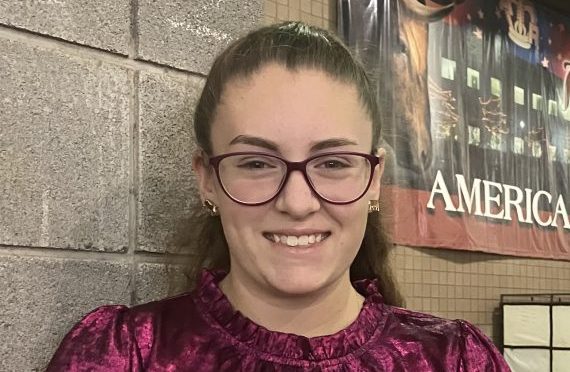
By Jewel Endicott
It’s a hot summer day and you come inside the house and reach for a cold glass of water.
While rehydrating the thought crosses your mind “where did this water originate from?”.
The truth is that water may have traveled through rivers, ponds, groundwater, or even rain clouds to reach the button of your glass.
If you’re like me, you probably see and notice all sorts of bodies of water as you drive up and down local roads and highways. But, how often have you stopped and thought about the purpose of those bodies of water you see?
The fact is, every pond that you see could be preventing floods from coming through neighborhoods or supplying public water to numerous homes. We take for granted the water that is in our hands that comes to us at the turn of a handle, but a lot of this water could be coming from watersheds.
You may be wondering, what is a watershed? Watersheds are essentially water structures that are designed for water that is shed during rainfall to gather in a specified area contained by a man-made dam.
Recreation is an added benefit of watersheds and provides yet another use for these bodies of water.
Without this added purpose watersheds may sit unused for months.
Landowners may add fish to their ponds and lakes for fishing purposes or use the water bodies to hunt on and utilize this habitat year-round for enjoyment.
Watersheds are first thought of as stopping floods but another important feature is they are designed to release extra water so it can continue its flow into natural rivers.
Watersheds were first put in place in the 1950’s with a main goal of slowing the income of water and preventing floods. They also are important in releasing water when it is necessary. After being used to regulate and prevent an excessive amount of water from running through neighborhoods they have been built in various places around the United States.
Today watersheds have grown by adding many more purposes. They filtrate water, create habitats, prevent droughts in rural areas and most importantly provide public drinking water.
Water from hundreds of different sources accumulates into ONE water.
In my local area of Bourbon County, there are two major rivers we get water from. The first being Mill Creek which was established in 1978. This river has 14 watersheds coming off of it. The Marmaton was started in 1984 following a major flood in the Fort Scott area with damage to local businesses and livestock. This river is slightly bigger with 30 completed watersheds.
A recent event of flooding occurred in April 2024 and in this case the county claimed there was 9 million dollars in damages. While this shows watersheds may have prevented some of the flooding that happened, if we had had more watersheds around the area it could have lessened the dollar amount of damage and the amount of water on roads. The heavy rains did bring much needed relief to local ponds by filling them up, but in the case of having added watersheds we could have collected and utilized more of this rainfall to prevent droughts going forward.
To understand watersheds it is important to look at them from different points of view. Some would argue they are against watersheds because you lose land that you could plant valuable crops on or that in their opinion we are harming the earth when we build these man made structures.
After looking closer you would see that not only do they end up helping the planet they can also support inhabitants downstream.
While it’s true that you could be losing the use of land by constructing a watershed, it’s also beneficial that the average watershed can hold up to 600 acres worth of water. This water can be used all around the farm and help the area continue to thrive making up for the loss of that land.
Many would agree we would not want to harm the earth we inhabit.
I believe we should preserve nature by placing as little harm as we can on its natural state, but I believe watersheds have an impact that is worth it.
At first people see them being built with machines and digging into the soil which I am sure causes some feelings of bitterness about the consequences of manipulating the land. But, after they are made and the equipment clears out is when they make the strongest influence on the ecosystem and we start to see the benefits they have on nature. Before being rebuilt that area did not have a constant source of water to rely on nor did it help prevent potential flooding in the area.
The creation of this savior is a multi-step process that begins when a skilled engineer comes to the expected watershed area and analyzes the land. After seeing if the site will collect enough water and benefit the area instead of harming it, plans are made for the construction of the unit.
To build this structure money must be collected.
Funding is accomplished by pooling money from the state and local level combined with the local land owners. The state conservation commission will supply the majority of the funding necessary equalling nearly 70%. The local watershed districts supply 25% through local taxes and the landowners supply the final 5%. A maintenance budget will also be established during this time to keep the watershed from breaking down over the years. If they are taken care of, an average watershed will last up to 50 years and hopefully longer.
Ranchers are fond of watersheds, especially in the winter because you can have a constant stream of water for cattle, which makes it much easier for them to keep livestock watered through the cold months. Additionally, watersheds generally maintain water through droughts and hot summer months keeping a consistent supply of water for livestock.
Many of us would agree no matter our opinion or views on topics, that water is essential to the planet. I am a strong advocate for preserving nature by not letting anyone impair it; however, I can see that water conservation is important to the success of our environment.
Watersheds serve the purpose of conserving one of our most precious resources….water.

So very proud of you Jewel! You are going to do great at the State Competition!!